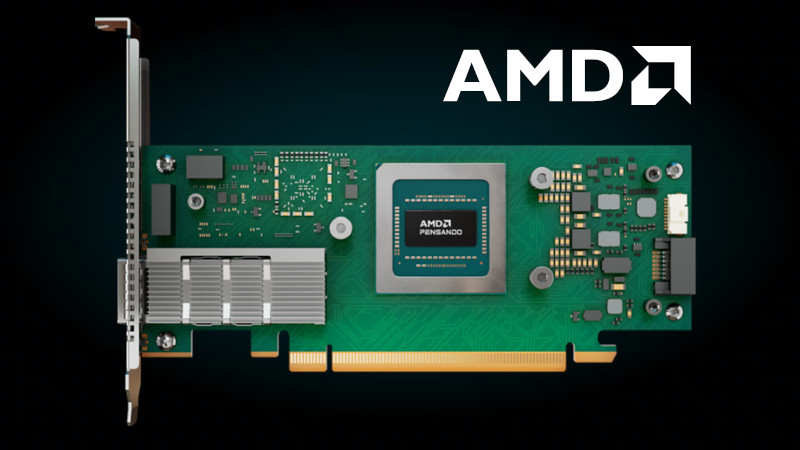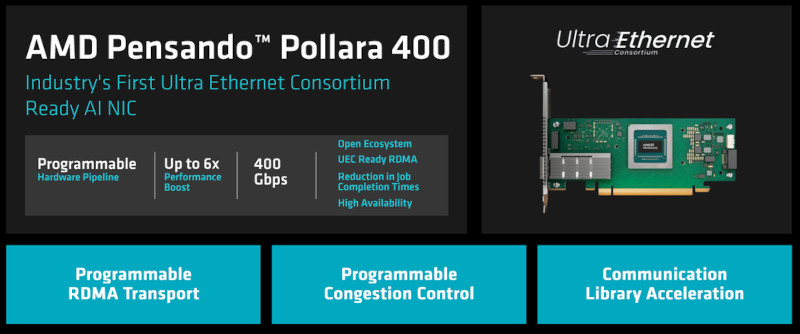AMD has unveiled the industry’s first Ultra Ethernet-enabled network card for use in AI and high-performance computing (HPC) systems. Interestingly, the final UEC 1.0 specification should appear only in the first quarter of 2025. The new AMD Pensando Pollara 400 network card promises significant system acceleration for AI workloads, making it an important solution for future data centers.

Image source: AMD
The Ultra Ethernet Consortium (UEC) has postponed the official publication date of the UEC 1.0 specification from the third quarter of this year to the first quarter of 2025. Despite this, AMD has already announced the AMD Pensando Pollara 400 network interface card, designed for data centers optimized for AI and HPC tasks, and promising a sixfold increase in performance for AI workloads.
The AMD Pensando Pollara 400 is an Ultra Ethernet card with up to 400 Gbps throughput, powered by a processor developed by AMD Pensando. This processor includes a programmable hardware pipeline, programmable RDMA (direct remote memory access) transport, and programmable congestion control and communication library acceleration. The first samples of the device are expected to appear in the fourth quarter of 2024, and commercial production will begin in the first half of 2025, immediately after the appearance of the UEC 1.0 specification.

The AMD Pensando Pollara 400 is designed to optimize AI and HPC networking with a range of advanced capabilities. In particular, the device supports intelligent multipath routing, which dynamically distributes data packets along the most optimal paths, preventing congestion and improving overall network efficiency. This is especially important in systems with high throughput and low latency requirements.
The Ultra Ethernet standard requires the card to have fast fault-tolerant switching that quickly detects and bypasses network failures while maintaining stable communications between graphics processing units (GPUs). This solution significantly reduces downtime in large AI clusters where failures can significantly reduce overall performance. The inclusion of technologies like these makes the AMD Pensando Pollara 400 and future Ultra Ethernet cards well suited for deployment in data centers that require high speed and reliability.
The UEC consortium has significantly expanded the number of participants, which has increased from 55 companies in March to 97 in October 2024. The UEC 1.0 specification aims to significantly expand the capabilities of traditional Ethernet technology. An important innovation is the development of separate profiles for AI and high-performance computing, which will achieve optimal performance and scalability of network solutions.